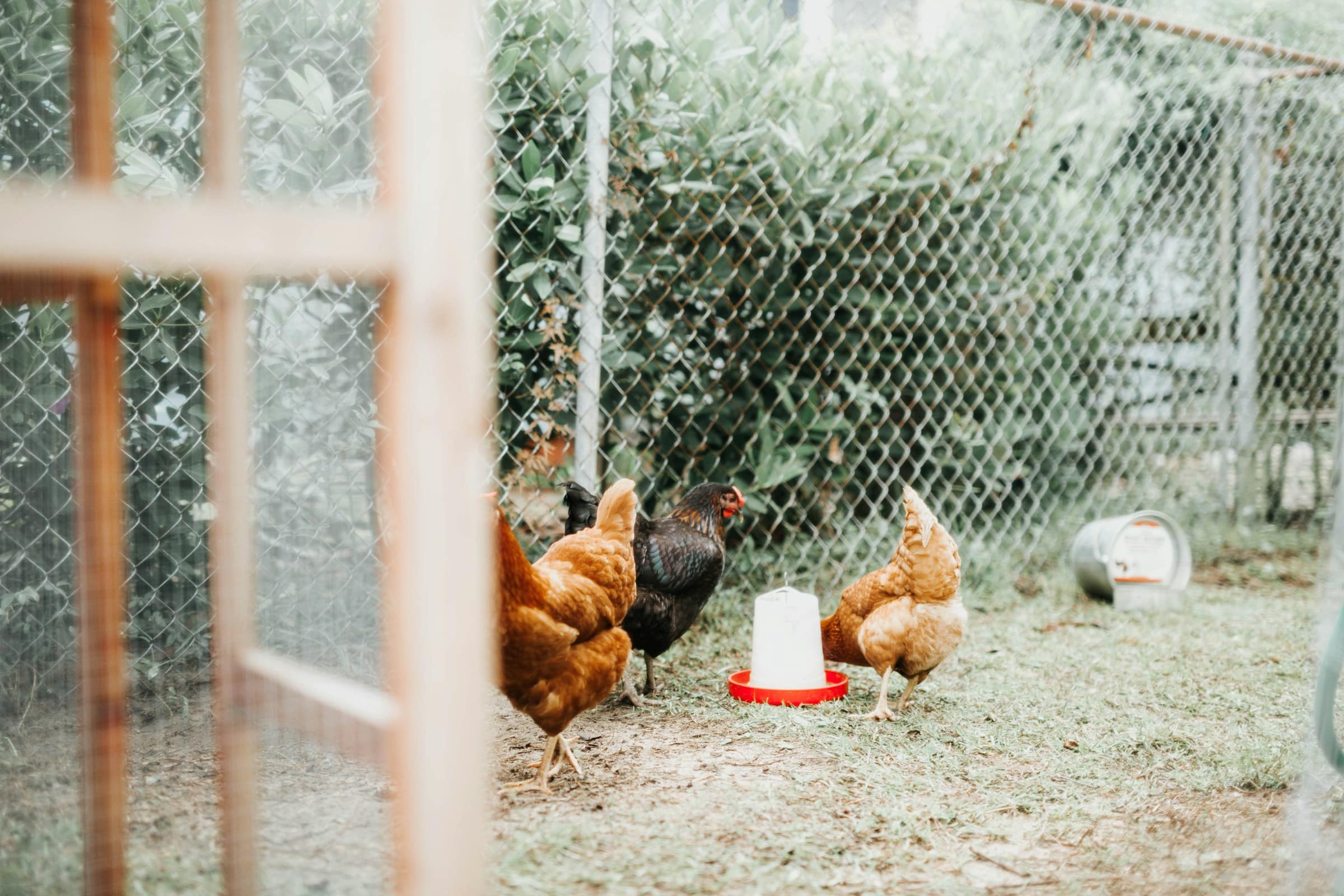How to Build a Sustainable Chicken Coop in a Suburban Backyard?

Raising chickens in a suburban setting has become a popular trend in recent years. More and more people are embracing this practice, attracted by the prospect of fresh eggs, natural pest control, and the simple joys of watching chicken behavior. But to do it right and ensure the health of your flock, it’s important to provide them with a suitable home – a chicken coop. And not just any old coop will do. Today, we’re going to delve into the process of building a sustainable chicken coop in your suburban backyard.
Considerations Before Building your Chicken Coop
Before you even pick up a hammer, you need to plan your chicken coop project thoroughly. A well-designed coop isn’t just a shelter; it’s a home for your chickens that fulfills their needs and keeps them healthy and happy. Therefore, there are several factors to consider.
Lire également : How Can You Incorporate a Retractable Ceiling in a Multi-Purpose Room Design?
First, determine how many chickens you plan to raise. This will dictate the size of your coop. A good rule of thumb is to provide at least 2 to 3 square feet of space per bird inside the coop and about 10 square feet per bird in the run.
Second, check your local regulations. Some cities or homeowners’ associations have rules about the size and location of chicken coops. Make sure your planned coop is compliant to avoid any potential issues down the line.
Avez-vous vu cela : What’s the Best Way to Waterproof a Basement Home Gym?
Lastly, consider the sustainability aspect. This includes using eco-friendly materials, incorporating features that decrease waste and increase efficiency, and designing the coop to blend harmoniously with the environment.
Choosing Sustainable Materials for your Coop
The materials you choose for your coop will significantly influence its sustainability. The most eco-friendly choice is to use reclaimed or recycled materials. You might be able to find recycled wood from old barns or pallets, or perhaps repurpose an old shed or children’s playhouse.
However, if you need to buy new materials, look for sustainably sourced options. For example, choose lumber certified by the Forest Stewardship Council (FSC), which means it’s been harvested responsibly. For roofing, consider using living roof materials, such as succulents, to help insulate the coop and provide a habitat for beneficial insects.
Other sustainable materials you might use include stones for the foundation (especially if you can gather them from your property), and straw or hemp for bedding, as these are renewable resources.
Incorporating Sustainable Features
With your materials chosen, it’s time to think about the features of your coop that can enhance its sustainability. One key aspect is ventilation. Proper ventilation prevents moisture build-up, which can lead to mold and health problems for your chickens. Position vents or windows near the top of the coop, as hot air rises, ensuring good airflow.
Think about waste management. Chickens produce a lot of manure, but this can be turned into a positive if managed correctly. Design your coop with a removable floor panel, making it easier to clean out the waste. This can then be composted and used as a rich fertilizer for your garden.
Don’t forget about water and feed. Rainwater collection systems can be easily added to the coop’s roof, providing a regular supply of water for your chickens. For feeding, consider a gravity-fed system that reduces waste.
Designing for Harmony with the Environment
Sustainable design is not just about materials and features. It’s also about how your chicken coop fits into its surroundings. A coop that suits its environment and complements your property will have less of an impact and be more accepted by your neighbors.
Consider the positioning of your coop. It should be in a location that gets some sunlight (to discourage dampness and pests) but also some shade (so the chickens can cool down on hot days). It should also be protected from strong winds. If you can place it near trees or shrubs, these can provide both shade and wind protection.
Think about aesthetics. Your chicken coop doesn’t have to be an eyesore. Design it to match your house or your garden style. Paint it in pleasing colors, add some flower boxes, or decorate it with artwork. A good-looking coop is a joy to behold and enhances rather than detracts from your backyard.
Preparing for Chicken Health and Welfare
Finally, remember that your ultimate aim is to provide a safe, comfortable home for your chickens. Design with their welfare in mind. The interior of the coop should have roosting bars for sleeping, and nest boxes for laying eggs. The outdoor run should be secure from predators, with wire mesh buried into the ground to prevent digging creatures from gaining access.
Consider adding some enrichment for your chickens, such as perches, ramps, or dust-bathing areas. This will keep them entertained and happy, and happy chickens are more productive and healthier.
Building a sustainable chicken coop in your suburban backyard is a project that requires planning and effort, but the rewards are significant. Not only will you have the satisfaction of creating a haven for your chickens, but you’re also contributing to a more sustainable world. Remember, every small step counts.
Utilizing Technology for Maximum Efficiency
In the digital age, technology can also play a crucial role in building and managing a sustainable chicken coop in your suburban backyard. Technology can help to automate and streamline various aspects of chicken rearing, making the process more efficient and less time-consuming.
A chicken door opener, for example, can be programmed to open and close the coop door at specific times. This ensures the chickens are secure at night and can roam freely during the day without requiring your constant supervision. This not only saves you time but also helps to maintain the health and happiness of your chickens.
Furthermore, automatic feeders and water dispensers can be installed to ensure a consistent supply of food and clean water for your flock. Some systems even allow you to monitor and control these devices remotely using a smartphone app, giving you greater flexibility and peace of mind.
Solar panels can also be installed on the roof of the coop to provide energy for any electrical devices you may use. This not only reduces your carbon footprint but also makes the coop self-sufficient and resilient in the face of power outages.
Even the waste management process can be made more efficient with the use of technology. For instance, waste can be collected and composted using a compost tumbler, which accelerates the composting process and reduces the amount of manual labor involved.
Conclusion: The Rewards of a Sustainable Chicken Coop
Building a sustainable chicken coop in your suburban backyard may seem like a daunting task, but with careful planning and execution, the rewards vastly outweigh the challenges. Not only does it provide a safe and comfortable home for your chickens, but it also contributes to environmental sustainability, bringing you one step closer to a greener lifestyle.
Moreover, the experience of raising chickens can be incredibly rewarding in itself. The fresh, home-grown eggs you’ll collect are a testament to your effort and dedication. More than that, the process of caring for chickens, watching them grow and interact, can bring immense joy and satisfaction.
So, whether you’re a seasoned chicken raiser or a complete newbie to this practice, consider sustainability in every aspect of your chicken coop building project. Remember, sustainability is not just about reducing waste or using eco-friendly materials. It’s about creating an environment that aligns with the natural world, promotes the well-being of your chickens and harmonizes with your suburban backyard.
In the end, a sustainable chicken coop is more than just a shelter for your chickens. It’s a symbol of your commitment to environmental stewardship, chicken health and welfare, and the pursuit of a sustainable lifestyle.
